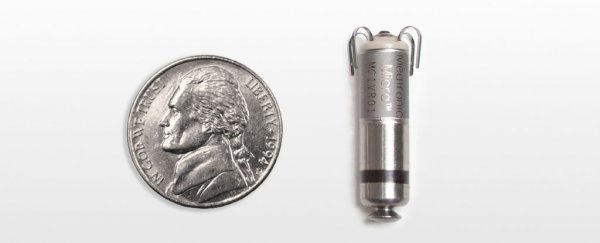A global clinical trial of the world's smallest, minimally invasive pacemaker has found that the device performed well for nearly all patients enrolled in the study, with the Micra Transcatheter Pacing System (TPS) successfully implanted in 99.2 percent of those testing the vitamin-sized unit.
Perhaps even more significantly, during the course of the trial 96 percent of patients experienced no major complications with the pacemaker - a 51 percent drop in what's seen in patients using conventional pacemakers.
"We are extremely pleased with the remarkably successful implant rates and safety profile of the Micra pacemaker, including the absence of device dislodgement," said principal investigator of the trial Dwight Reynolds, from the University of Oklahoma Health Sciences Centre.
At less than one-tenth the size of conventional pacemakers, the Micra can be implanted directly into the heart using a catheter, whereas traditional devices require surgical incision and the creation of a pocket under the skin.
"By not creating a pocket and implanting a rigid device directly below the skin, it eliminates another potential source of complications and any visible sign of the device," said one of the team, Mikhael El Chami from Emory University.
The Micra also doesn't feature the wires or 'leads' used by conventional pacemakers to connect to the heart, instead featuring flexible tines that attach to the interior of the right ventricle to send electrical pulses whenever it detects an abnormal heart rhythm.
This change is significant, as the wires used to deliver pacing therapy in conventional pacemakers can lead to a range of medical complications, including infection and vein injury.
Of the major complications that did arise with the Micra, cardiac injuries affected 1.6 percent of patients, complications at the groin site (where the catheter is inserted) affected 0.7 percent, and pacing issues affected 0.3 percent of patients. There were no dislodgements or systemic infections. These findings have been published in The New England Journal of Medicine.
"We were pleased to participate in this important trial, as this will likely be the way pacemakers are implanted in the future," said Michael S. Lloyd, from Emory. "The outstanding results are very encouraging and will allow us to continue to offer this novel device as a safe alternative to our patients."
